Reactive Solutions - An FHWA Technical Update on Alkali-Silica Reactivity
Volume 4, Issue 3
Welcome to the newest edition of Reactive Solutions, a Technical Update on Alkali-Silica Reactivity (ASR) issues. This periodical disseminates important ASR subject matter from a variety of sources, including the Federal Highway Administration’s ASR Program. The program’s goal is to deploy methods that state highway agencies can use to prevent and mitigate ASR. This goal is being achieved through technology transfer, including real-world field trials, demonstration projects, and tools for practitioners to address ASR in their state. This periodical helps achieve the program’s goal by providing readers with the tools and information needed to address this complex concrete distress problem.
Inside this Issue:
An Update on Ongoing Field Trials
Part 2 of 2
The Federal Highway Administration’s (FHWA) ASR activities include a multi-year program termed the ASR Development and Deployment Program. The program includes field trials of real-world ASR prevention and mitigation. To date, there are a total of eight field trials. This issue of Reactive Solutions is the second of a two-part update on the progress of the field trials.
Leominster, Massachusetts
In October 2005, a section of Jersey barriers along Route 2 in Leominster, Massachusetts, was treated with lithium nitrate applied topically and using vacuum impregnation, and also with a series of silane solutions. (These treatments were applied as part of a prior FHWA program termed the FHWA Lithium Implementation Program, which evaluated the use of lithium nitrate as a preventative and mitigative method for ASR.) To compare the efficacy of these treatments, several untreated barriers were chosen as control sections. Later in 2005, the Massachusetts Department of Transportation (MassDOT) treated the barriers surrounding the treatment section with a 40% silane solution in order to mitigate the ASR distress. Figure 1 shows the condition of the untreated barriers in 2005, alongside a section that was treated with the 40% silane solution.
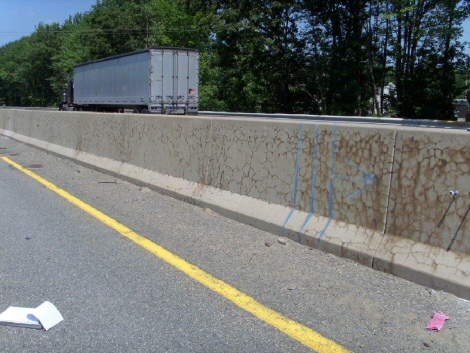
Figure 1. Barriers treated with 40% silane in 2005 (left of the spray painted arrow and lines); control section can be seen right of the spray-painted lines.
Five years later, this field site was chosen by the ASR Development and Deployment Program for additional treatment and continued monitoring. The purpose of these additional treatments was to compare three types of coating materials to the original treatments under the 2005 FHWA project and to collect data in order to determine the best mitigative option for this entire treatment section. In October 2010, a one-mile section of the barriers previously treated by MassDOT was treated with three additional types of coatings - a 40% silane solution, a 100% silane solution, and an elastomeric paint. These treatments were completed by MassDOT at the end of October 2010.
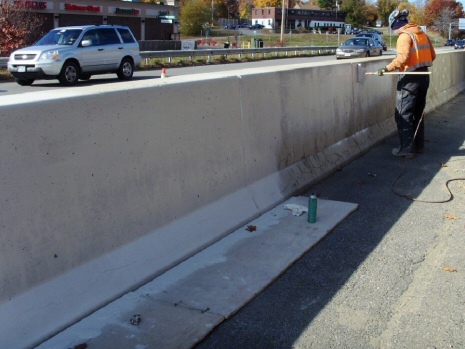
Figure 2. Application of elastomeric paint on ASR-affected barriers.
The site was visited in May 2011 to collect expansion, humidity and cracking data, which is currently being analyzed. The next monitoring trip is anticipated in the fall of 2011.
Wetumpka, AlabamaIn December 2009, a historic bridge in Wetumpka, Alabama was evaluated and visually surveyed to determine its potential as a field trial candidate for this program. The Bibb Graves Bridge, shown in Figure 3, has several arched elements; however, only one of the arches displayed distresses similar to ASR. Locations in this arch were selected to extract cores for petrographic analysis in order to confirm ASR.
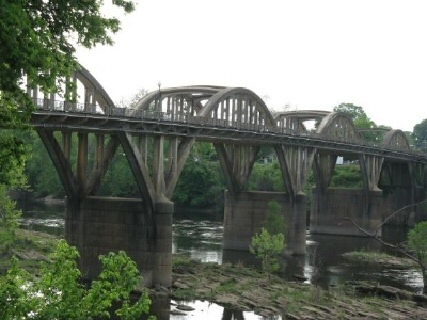
Figure 3. View of Bibb Graves Bridge.
The extracted cores were analyzed and a petrographic report was submitted to FHWA and Alabama DOT in June 2010, confirming ASR in the distressed bridge arch. Discussions were held during the summer to determine viable mitigation options for the bridge, and in November 2010, a treatment plan was finalized between FHWA and the DOT. Later that same month, the bridge arch elements were treated by the DOT with a 40% silane solution (see Figure 4). In addition, sections of the arched elements were instrumented for expansion, humidity and cracking measurements in order to evaluate the effectiveness of the treatment in reducing the rate of distress in the affected arch element. Data was collected immediately after instrumentation for baseline measurement purposes.
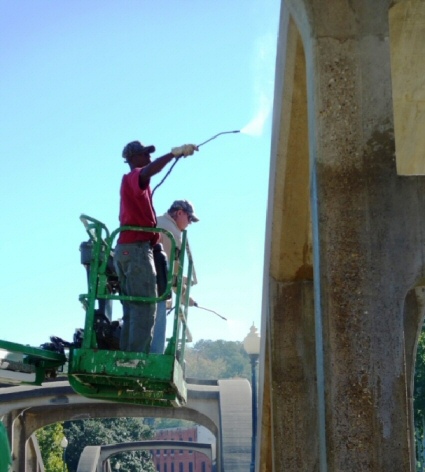
Figure 4. Application of 40% silane by DOT employee.
In April 2011, a monitoring visit was conducted to collect expansion, cracking and humidity data; since then, three additional monitoring visits have taken place. The next is anticipated to take place at the end of this summer.
Bangor, Maine
In early 2010, a series of concrete structures in Bangor, Maine was selected to undergo mitigative measures using various treatment methods under this program. A total of five bridge structures along I-395 were selected, and the treatment details for each element can be seen in Table 1.
| Bridge Structure | Elements Selected for Treatment | Type of Treatment |
|---|---|---|
| I-395 over Main Street | Eastbound and westbound abutments and wing walls | 100% and 40% silane solution |
| I-395 over Penobscot River | Two columns | 100% and 40% silane solution |
| 5th Parkway over I-395 | Eastbound and westbound abutments and wing walls | 100% and 40% silane solution, and an elastomeric coating |
| South Parkway over I-395 | Three columns | Carbon-fiber-reinforced polymer (CFRP), electrochemical treatment with lithium nitrate, and 100% silane solution |
| Green Point Road over I-395 | Eastbound and westbound abutments and wing walls | 100% and 40% silane solution, and an elastomeric coating |
Table 1. Treatment details for each bridge element.
Several sections of each element were instrumented in late May 2010 to evaluate the efficacy of the treatments and monitor expansion, cracking and internal humidity of the structure. In June 2010, two cylindrical columns located under the South Parkway Bridge were treated using lithium nitrate via electrochemical methods and a carbon fiber reinforced polymer wrap.
In June of 2011, the wingwalls and abutments of three bridge structures were treated with the two different silane products and an elastomeric paint. In addition, one cylindrical column under the South Parkway Bridge was treated with only the 40% silane product.
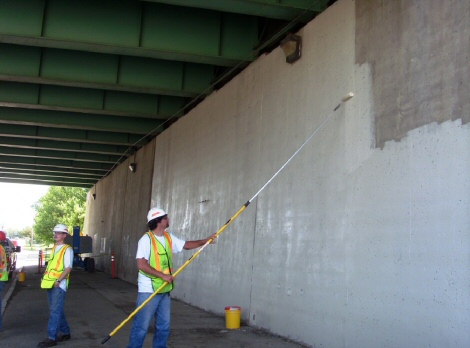
Figure 5. Application of elastomeric paint on bridge abutment.
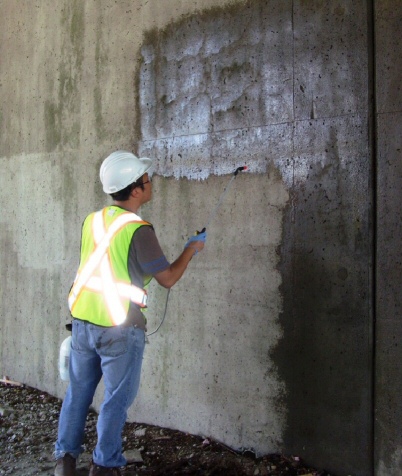
Figure 6. Application of silane on bridge abutment.
Maine DOT's maintenance crew provided traffic control and assisted in applying the materials. Moreover, expansion, cracking and humidity data was collected from the original instrumentation sections. Two large columns under the Penobscot River Bridge are expected to be treated by the end of summer 2011.
The next monitoring trip for data collection is anticipated to occur later this fall 2011.
This field trial was first published in an earlier version of Reactive Solutions. To read the earlier publication, click here.
Oahu, HawaiiIn the summer of 2009, Hawaii DOT expressed interest in participating in the FHWA ASR Development and Deployment Program. Although the DOT has not observed ASR in any of their transportation structures, interest was expressed in evaluating local materials for potential reactivity. In addition, since Hawaii imports most supplementary cementitious materials and some aggregates into the state for their use, the DOT was also interested in developing expertise to evaluate these imported materials that may be used in Hawaii. Consequently, Hawaii DOT provided a number of aggregates to test for ASR susceptibility in the laboratory. In the summer of 2010, a report detailing the results of the American Society of Testing and Materials (ASTM) test procedures C1260 and ASTM C1293 was distributed to Hawaii DOT, FHWA, and interested parties at the University of Hawaii and the industry at-large. Conflicting reactivity test results for some aggregates led to the decision to construct an outdoor exposure block site using aggregates common to the islands of Oahu, Kauai, Maui and Hawaii (The Big Island) in an attempt to capture more reliable, long-term monitoring data. Additionally, some "known reactive" aggregates were imported to prove that conditions in Hawaii can initiate production of ASR products. In March 2011, a testing plan to construct the exposure site using mix designs with these various aggregates was finalized.
A total of 30 exposure blocks were mixed, cast, and transported to the exposure site located on the University of Hawaii campus during a period of two weeks in June 2011.
The blocks, once stripped of their molds, are approximately 1 ft x 1 ft x 2 ft in size. The formwork for the blocks was instrumented with steel pins which then remained in the blocks for expansion measurements (see Figure 7).
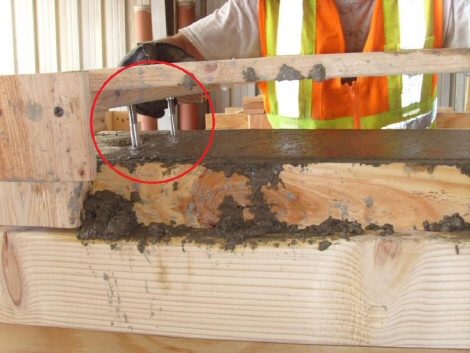
Figure 7. Placing wood formwork with steel pins into the top of the fresh concrete. The pins will be used to monitor the expansion of the block.
Baseline expansion measurements were taken after the blocks were placed and leveled on the site. The next set of expansion measurements are anticipated to be recorded in the fall of 2011.
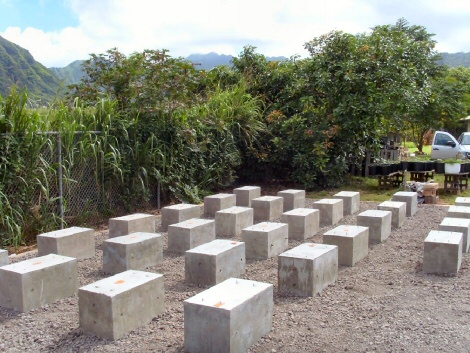
Figure 8. Overview of completed exposure site located in the Magoon Research and Instruction Facilities campus (University of Hawaii).
Schedule of Events
October
13-17 AASHTO Annual Meeting and Trade Fair, Detroit, Michigan
16-20 ACI 2011 Fall Convention, Cincinnati, Ohio
November
1-2 The Use of Industrial Byproducts in Highway and Road Construction, Austin, Texas
2-4 2nd International Conference on Best Practices for Concrete Pavements, Florinapolis, Santa Catarina State, Brazil
8-9 ASR Development and Deployment Technical Working Group Meeting, Clemson, South Carolina
9-10 Roads and Bridges Live: 2011, Las Vegas, Nevada
29-December 2 ACPA 48th Annual Meeting, Indian Wells, California
December
4-7 ASTM International Committee C09, Concrete and Concrete Aggregates, Tampa, Florida
12-14 2nd International Conference Future Concrete, Dubai, UAE
Technical Editor: Dr. Michael Thomas
Managing Editor: Bebe Resendez
FHWA Contact: Gina Ahlstrom, Concrete Pavement Engineer (Gina.Ahlstrom@dot.gov.) FHWA—Office of Pavement Technology
Editorial Committee: Lizanne Davis (FMC Corporation), Steve Lane (Virginia DOT), Colin Lobo (National Ready Mix Concrete Association), Brian Merrill (Texas DOT), Peter Taylor (CP Tech Center), Paul Tennis (Portland Cement Association), Leif Wathne (American Concrete Pavement Association)
Get On the Reactive Solutions Mailing List
Want to subscribe to future issues? Email us at asrnewsletter@transtec.us. – Subscriptions are free.

